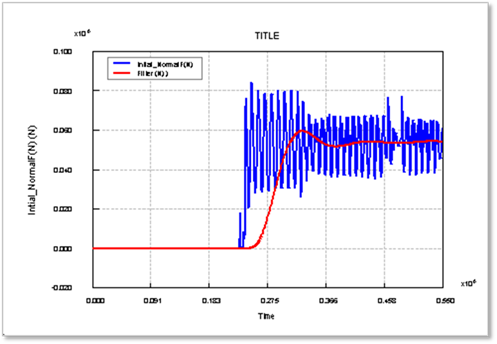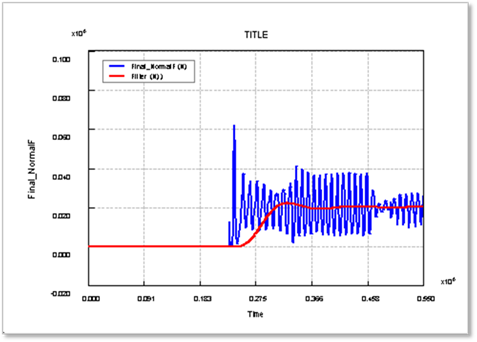
As multi-body dynamics solve DAE problem that includes contact between several bodies, their results are not free from numerical noise. Let’s consider the result of Figure 1. One can understand the dynamic behavior of the original result (Blue). It shows that the transient phenomenon is shown around 0.215 second. Now, the red color is the filtered result, which shows the mainly contributed response clearly. In general, engineer tries to control the mainly contributed response for improving the engineering performance of his dynamic system.

Figure 1 Typical result including numerical noise
If the numerical noise is not much less than the main response, the filtered responses are recommended for easy optimization.
Figure 2 shows a typical optimization result by using the filtered response. The main response (Red) is much less than that of Figure 1. However, the magnitude of noise (Blue) is shifted down, even though it is less than that of Figure 1. If one does not use low-pass filter, he cannot obtain good optimization results because numerical noise prevent the estimation of design change effect.

Figure 2 A typical optimization result by using the filtered response